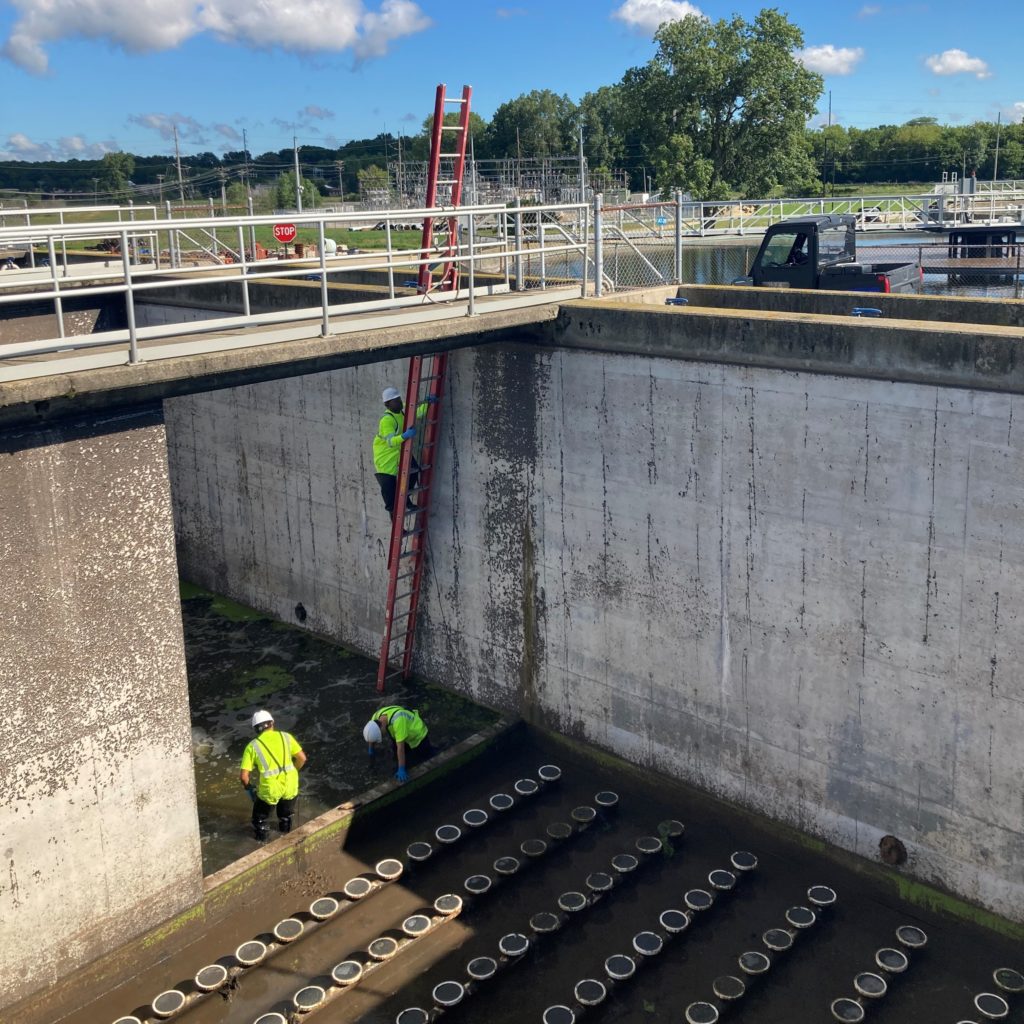
Summertime is for barbeques and camping and… aeration tank cleaning. Every summer, the Facilities Maintenance (FM) crew performs cleaning and inspection of a portion of the plant’s 30 aeration tanks. The project is the team’s largest scope of work, taking a full month and involving a team of four for each tank.
In terms of infrastructure, the plant is actually divided into four separate plants, each with its own set of aeration tanks. One plant’s aeration tanks are cleaned annually and in 2022 it was plant 4’s turn, aeration tanks (AT) 25-30. This year, we cleaned 6 tanks, inspected 6480 diffuser stones and ended up replacing 715 diffuser stones and 1,105 O-ring gaskets.
The tanks are impressively large in their scope – at 18 feet deep and 200-300 feet long, the crew members working at the bottom of an empty tank look a very long way down.
Anatomy of an aeration tank
Aeration tanks are the part of wastewater treatment where the microorganisms do their magical work of breaking down organic materials and consuming the nutrients we want to be removed, like phosphorus. It’s really nature at work, where the bugs are the heart of the system.
Aeration tanks are connected in a “train” of three tanks that work together. The first tank in the train is where most of the grit and snails accumulate. The second two tanks in the train are lined with diffuser stones that provide the aeration for the tanks.
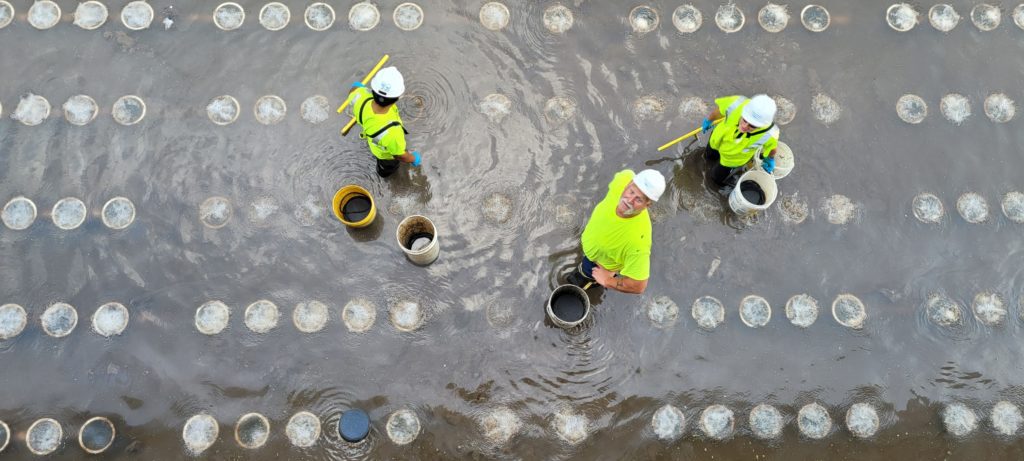
But the science of knowing how to harness the power of the bugs is what helps the treatment process succeed. In the three tanks that make up a train, part of the first tank is the selector zone; this is where the microorganisms are given no aeration in order to motivate (starve) them so they are ready to work and eat when they reach the second two tanks in the train.
Interestingly, this “starvation” process also causes the organisms to release cellular phosphorus, which seems counterintuitive as we want less phosphorus. But this actually results in the organisms later consuming both the released phosphorus and any excess phosphorus when they reach the aerated zone. This results in high phosphorus at the end of the selector zone but then less phosphorus once the aerated zone is reached.
Down in the tank
The bulk of the cleaning and inspection work for the FM crew happens in these second two tanks, where, depending on the tank, there are between 400 and 1,600 stones. The diffuser stones are power washed individually and then, with the tank filled just above the level of the stones, the crew assesses the aeration performance from above and malfunctioning stones are mapped out.
Then back down into the tank they go, to replace O-ring gaskets or entire stones. This part of the project is the most time-consuming and labor-intensive.
The lack of breeze and shade at the bottom of those deep tanks also makes it a hot job that can feel like a sauna.
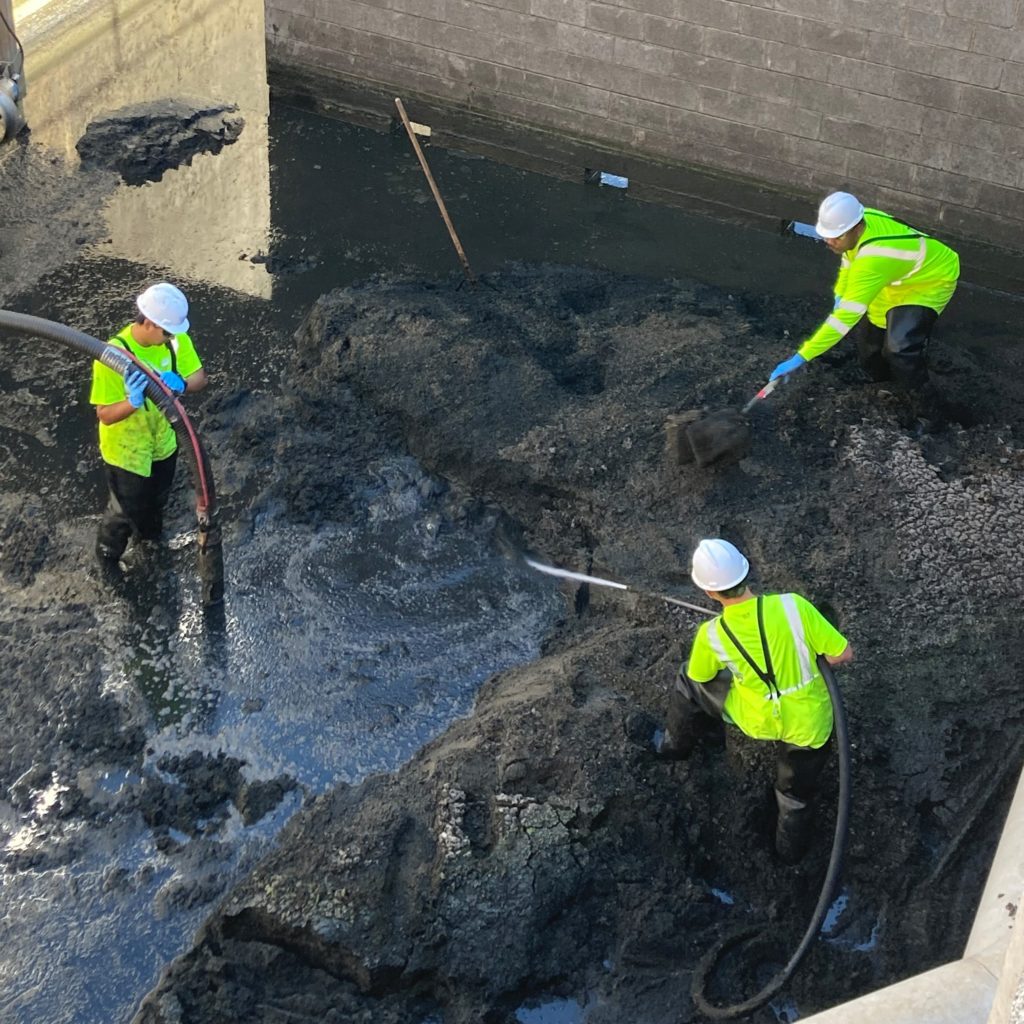
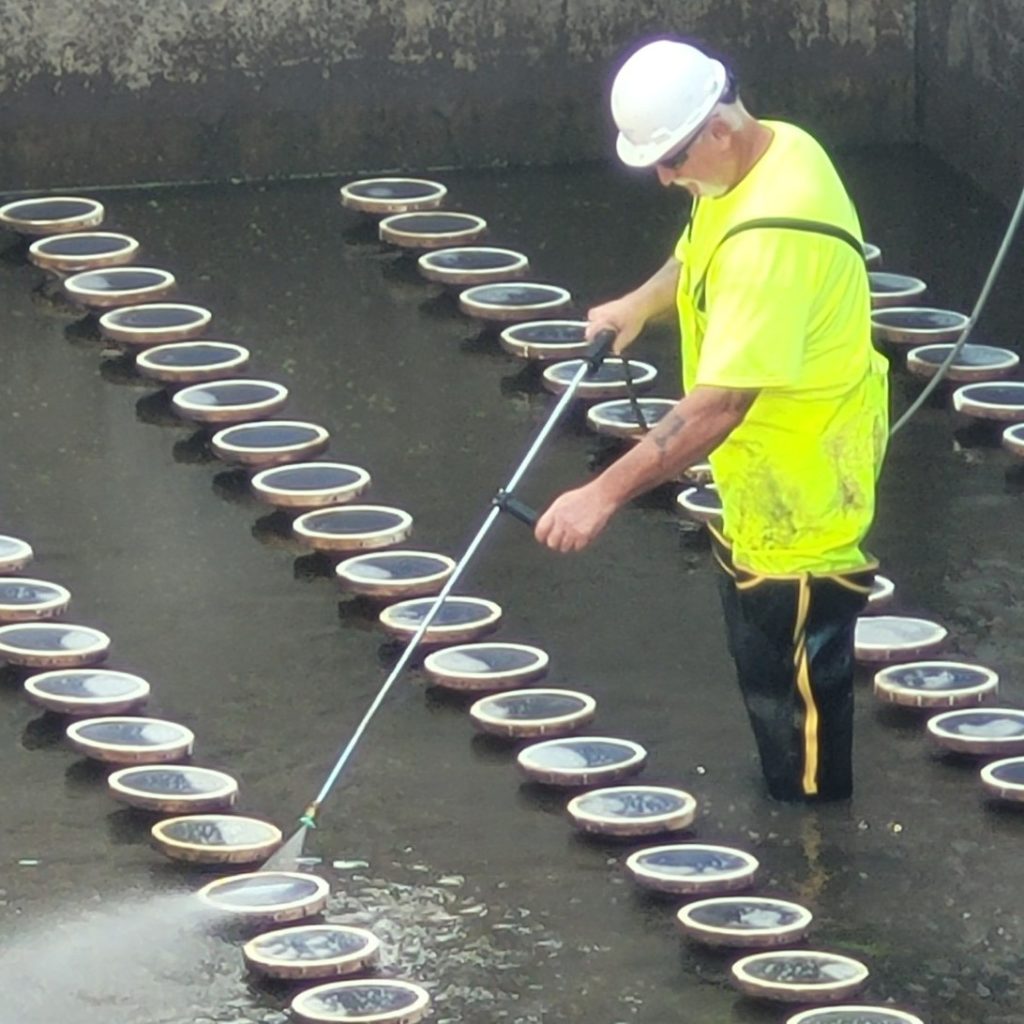
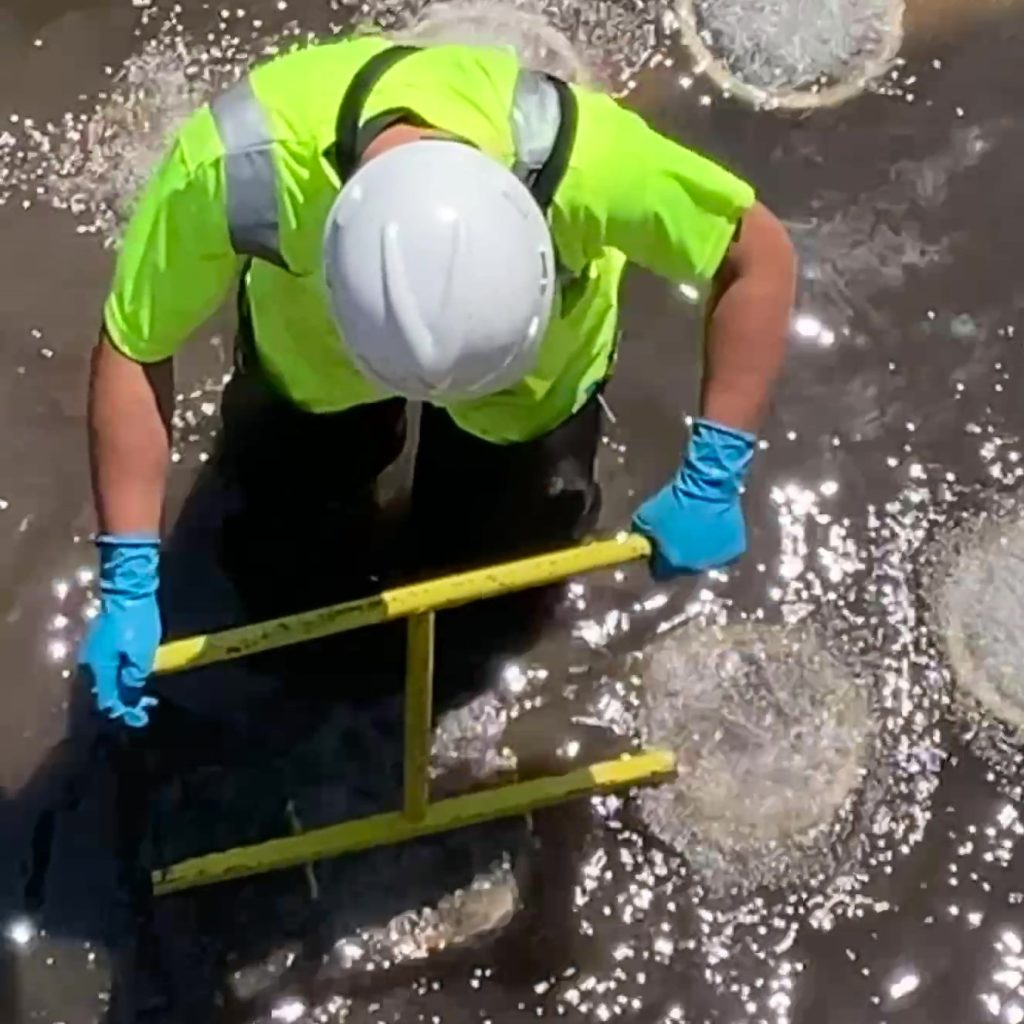
Grit and snails
The last part of the project is removing the grit and snails from all the tanks in the train. This usually involves contracting out a septage hauler who has the equipment to suck up the debris, but it’s the FM crew who are in the tank with the hose and the shovels.
After the majority of the snails have been removed the team still has to wash and move the remaining sludge through the system.
And, with that, the aeration tank cleaning process at our wastewater treatment plant is done.
Blog article written by Jessica Spiegel
For more a more detailed look at the aeration process, read “What is Aeration for Wastewater Treatment” by Water and Wastes Digest. To learn more about our operations, maintenance and other wastewater treatment processes, visit the District blog or follow @MadMetroSewer on Facebook, Twitter, Instagram or TikTok.






